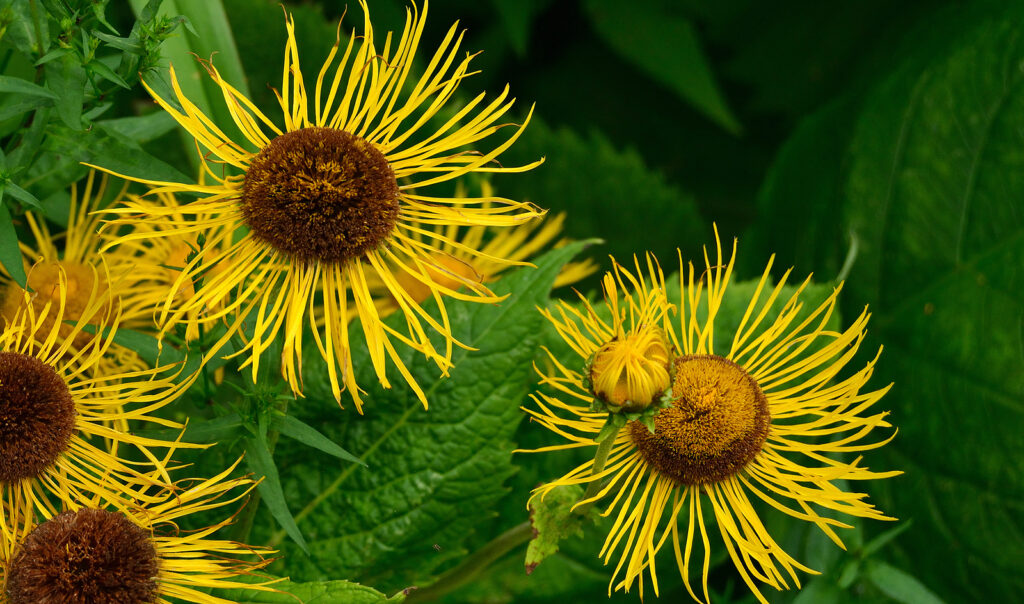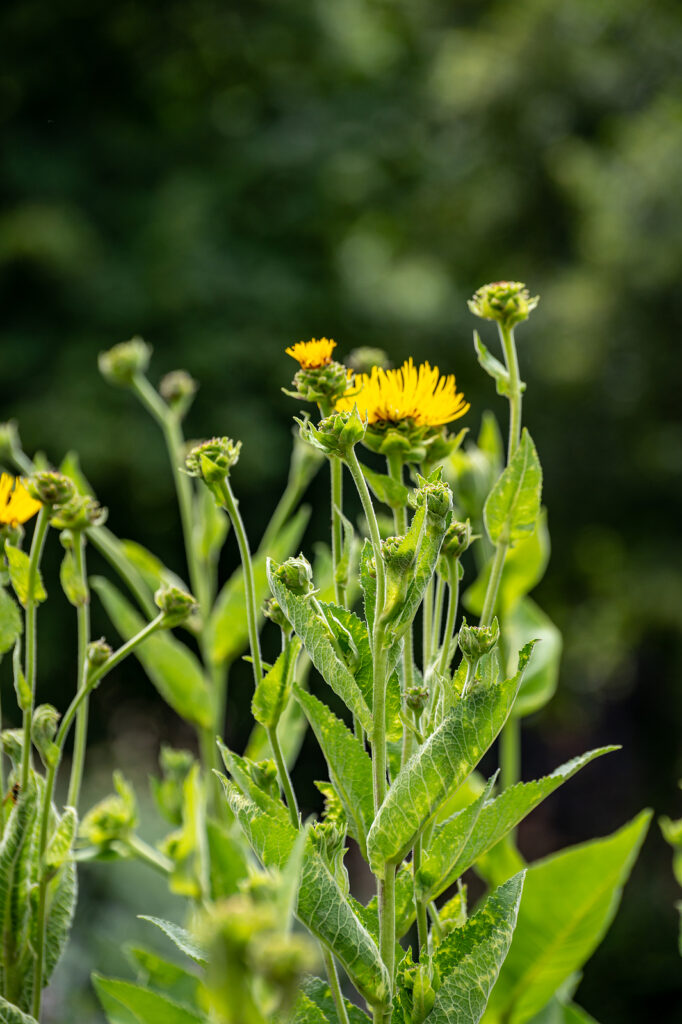Inula—commonly called elecampane– bears showy daisy-like flowers in shades of orange-yellow and yellow. The blooms are carried singly or in flat-topped clusters. Flower petals are very narrow and often dropping.
Add taller Inula varieties–to 6 feet (2m) tall–to summer flower borders. Shorter varieties–to 2 feet (1.8m) tall–can be used at border edges or in rock gardens.
Inula is a genus of about 100 species of mostly perennials and some herbs.

Get to know Inula
- Plant type: Perennial
- Growing zones and range: Zones 4 to 9
- Hardiness: Dies back after the first frost
- Height and width: 2 to 6 feet (.6-1.8m) tall and 2 to 4 feet (.6-1.2m) wide
- Foliage: Usually large basal leaves and progressively smaller stem leaves
- Flowers: Daisy-like flower heads are flat with numerous narrow yellow ray florets and tubular disk florets are borne singly or small clusters
- Bloom time: Mid- to late summer
- Uses: Taller species in borders; shorter species in rock gardens or bed edging
- Common name: Encampanes
- Botanical name: Inula
- Family name: Asteraceae
- Origin: Europe and temperate Africa and Asia
Where to plant Inula
- Grow Inula in full sun.
- Plant Inulas in humus-rich, well-drained soil.
When to plant Inula
- Set container-grown Inula in the garden in spring.
- Sow seed in containers in a cold frame in spring or autumn.

Planting and spacing Inula
- Space Inula 24 to 36 inches (61-91cm) apart.
- Sow seed ¼ inch deep in sterile potting soil or evenly prepared garden soil.
How to water and feed Inula
- Keep the soil evenly moist.
- Fertilize Inula in spring with an all-purpose organic fertilizer.
Inula care
- Taller species need support.
Inula pests and diseases
- Powdery mildew may be a problem if growing conditions are too dry.
Inula propagation
- Sow seed in containers in a cold frame in spring or autumn.
- Divide perennials in spring or autumn.
Inula varieties to grow
- Inula ensifolia, leaved Inula: Species grows to 24 inches (61cm) tall; lance-shaped leaves; clusters of 2-inch-wide yellow flowers.
- I. helenium, Elecampane: Grows 3 to 6 feet (1.8m) tall; clump-forming; bears 3-inch-wide yellow flowers.
- I.hookeri: Grows to 30 inches (76cm) tall with lance-shaped leaves; pale yellow flowers to 3 inches wide borne singly or in small clusters.
- I. magnifica: Species grows to 6 feet (1.8m); forms clumps; bears 6-inch-wide daisies.



